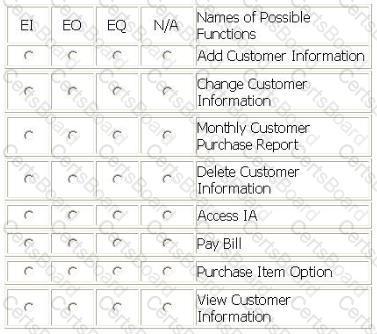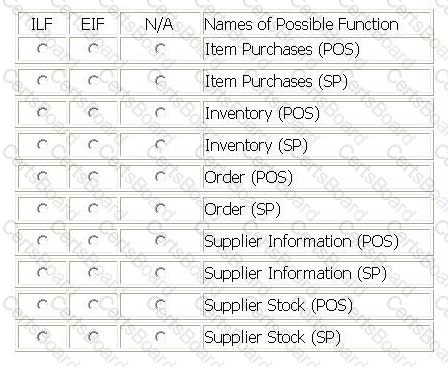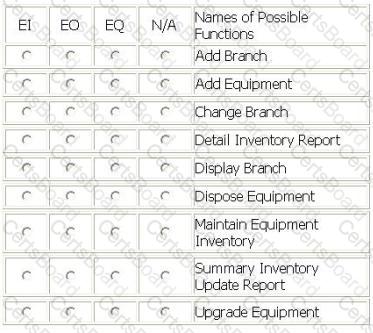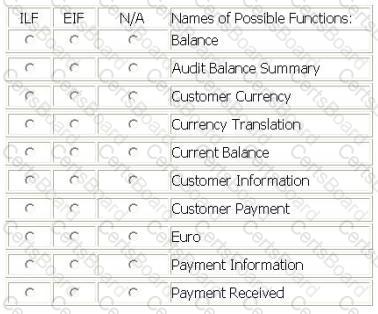Several functions are outlined within the following scenario for the Internet Application (IA):
From the Names of Possible Functions listed identify the transactional functions for the IA application. Select N/A if a Name of Possible Function does not apply.
Identify the functions used:

The Stock Purchasing (SP) and Point of Sale (POS) applications have the following requirements.
Identify the functions used:

An Assets Tracking application has a batch update process. Twice a month each of the branch offices sends a transaction file to the headquarters.
Identify the functions used.

Several data functions are described in the scenario for the Accounts Receivable fAFO application:
From the Names of Possible Functions listed identify the data functions for the AR application. Select N/A if a Name of Possible Function does not apply.
Identify the functions used:



